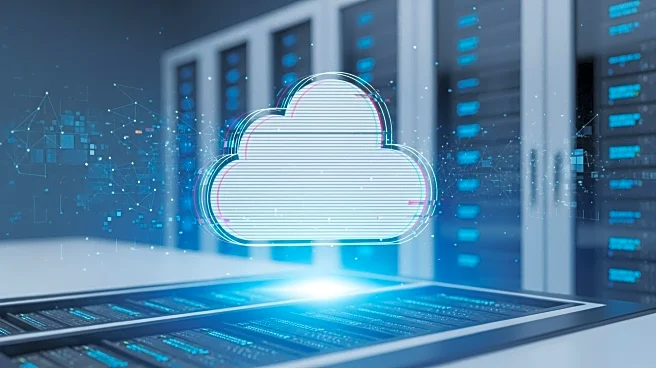What's Happening?
Amazon Web Services (AWS) experienced a significant outage from October 19 to October 20, affecting numerous online services and applications. The outage impacted popular platforms such as Venmo, Snapchat,
Fortnite, and even Amazon's own Alexa. The disruption was traced to DNS resolution issues with AWS's DynamoDB service endpoints in the US-EAST-1 region, which includes data centers in Northern Virginia. AWS reported increased error rates and latencies across multiple services, causing widespread connectivity issues. By 3:01 PM on October 20, AWS announced that all services had returned to normal operations after resolving the underlying DNS issue.
Why It's Important?
The AWS outage highlights the vulnerability of relying heavily on a single cloud service provider for critical internet infrastructure. AWS holds a significant share of the global cloud infrastructure market, estimated at 30 percent, making it a backbone for many online services. The disruption affected a wide range of industries, including finance, entertainment, and transportation, demonstrating the potential risks associated with centralized cloud services. Companies relying on AWS faced operational challenges, potentially leading to financial losses and customer dissatisfaction. This incident underscores the need for diversified cloud strategies to mitigate risks associated with service outages.
What's Next?
As AWS services return to normal, affected companies will likely assess their cloud strategies to prevent future disruptions. Businesses may consider diversifying their cloud service providers or implementing more robust contingency plans. AWS will need to address the root causes of the outage and improve its infrastructure resilience to maintain client trust. The incident may prompt discussions among industry leaders and policymakers about the concentration of cloud services and the need for regulatory oversight to ensure stability and reliability in digital infrastructure.
Beyond the Headlines
The AWS outage raises ethical and operational questions about the dependency on major tech companies for internet functionality. It highlights the potential consequences of monopolistic control over digital infrastructure and the need for transparency in service operations. The incident may influence future cloud service agreements, emphasizing the importance of service level agreements (SLAs) and accountability in maintaining uninterrupted service delivery.











